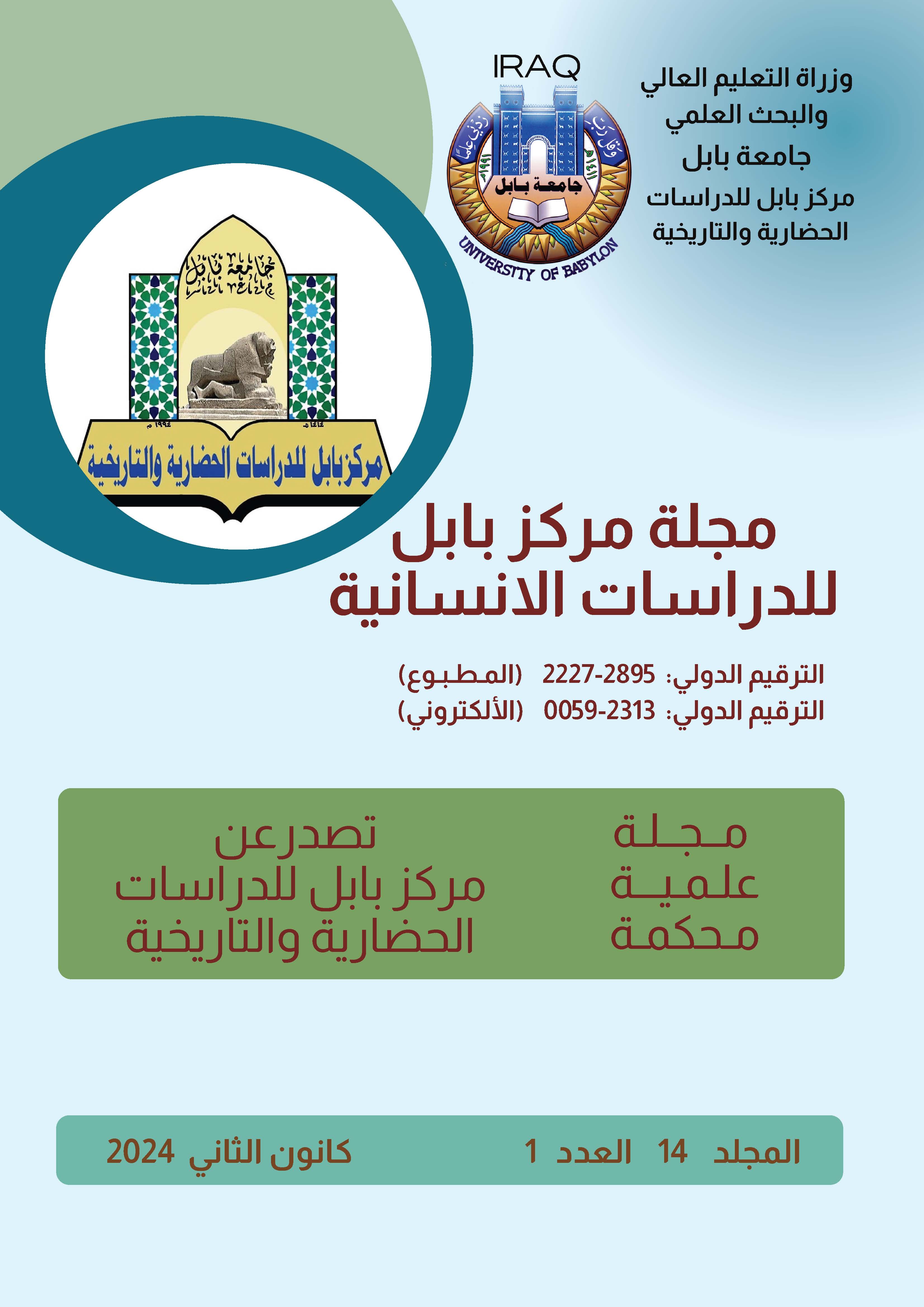A critical view of the vices embodied in Nahj al-Balagha (The negative other is a model)
Keywords:
Nahj al-Balagha, the other, the negative, vices, a critical visionAbstract
Nahj al-Balagha was concerned with the other, as it took into account all patterns of interaction, both negative and positive. It dealt with the other and the vices that resulted from it in different ways. It also dealt with it within a variety of formats, and linked it in many ways to its semantic context.
Scholars and commentators in the field of literary and intellectual studies have tried to touch upon some of the secrets of this subject, whether in the Holy Qur’an, or in Nahj al-Balagha, or in the field of hadith or poetry... or otherwise. There have been comprehensive readings that cover the positive and negative aspects, especially in Nahj al-Balagha, where Multiple cultural, linguistic, religious and social fields.
Nahj al-Balagha dealt with the other through two main styles: the human other and the inhuman other. Regarding the human other, Imam Ali (peace be upon him) dealt with it through two opposite images: the image of the negative other, and the image of the positive other. A negative other can be defined as a person who poses a threat or danger to another, whether that other is an individual, group, or society. The negative other is characterized by negative characteristics such as tyranny, condescension, ingratitude, and rejection of the principles of justice, love, and humanity.
Nahj al-Balagha dealt with the image of the negative other through several images, including the unjust ruler, who is a clear example of the negative other, as he is the one who rules unjustly, oppresses people, and exploits his power for his personal benefit. The caliphs who opposed Imam Ali (peace be upon him) are another example of the negative other, as they were the ones who fought the Imam and tried to assassinate him, and caused a lot of strife and unrest in Islamic society. A person who disagrees in religion, belief, or doctrine is another example of a negative other, as he is one who refuses to accept the truth and tries to impose his opinion on others. The infidel, the dhimmi, the hypocrite, and the enemy are another example of the negative other. They represent a danger to the Islamic community and try to undermine its security and stability.
The image of the negative other leads to many negative effects, including injustice, persecution, strife, unrest, wars, and conflicts.







